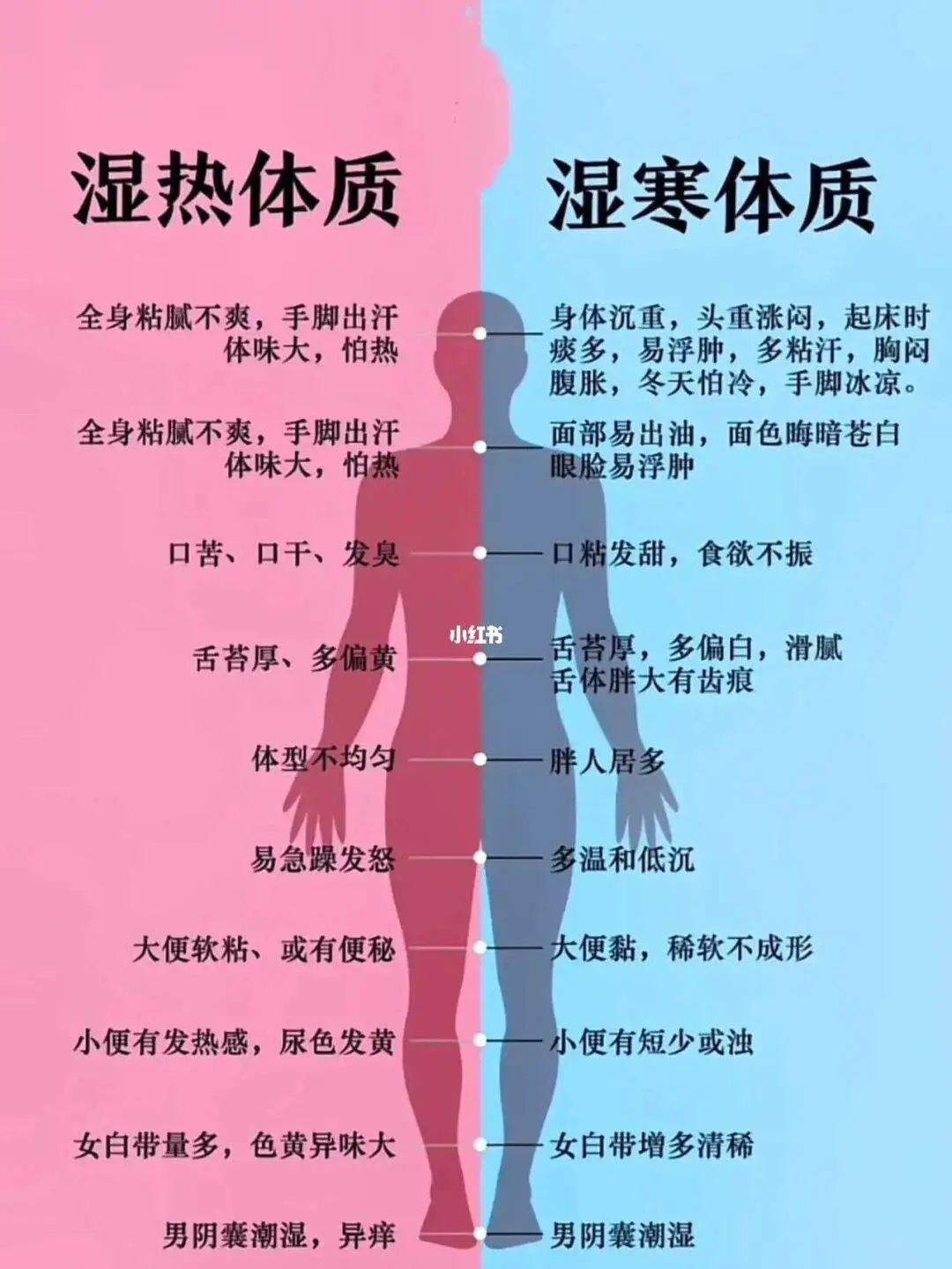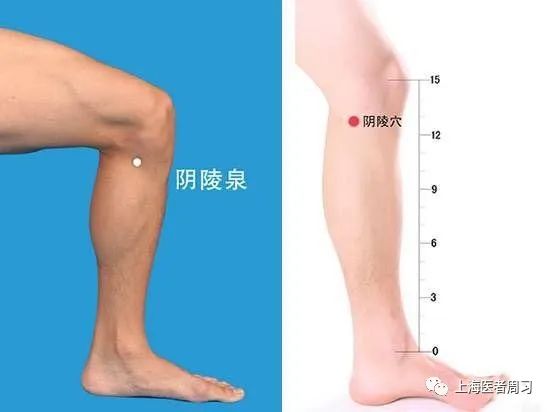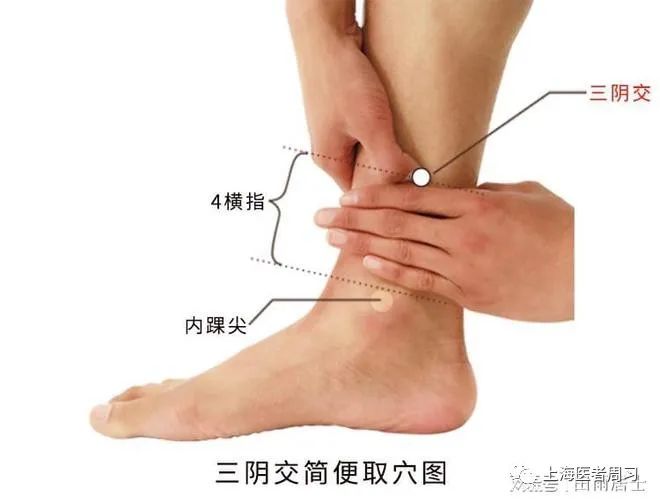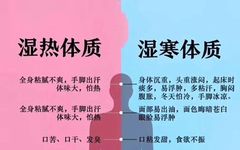Please click on the blue text "Shanghai Medical Practitioner" above, then click "Follow" so you can receive my informative articles daily.Damp-heat constitution refers to a state where body fluids cannot be properly expelled, leading to retention within the body. Over time, this stagnation transforms into heat, characterized by feverish body, yellow and turbid urine, and sticky stools, among other symptoms.
Damp-heat constitution often arises from prolonged exposure to humid and hot environments, excessive consumption of greasy, rich, spicy, and warming foods, or factors such as high work stress and unresolved emotional distress. These lead to abnormal fluid metabolism and the accumulation of dampness and heat within the body.
Factors that can lead to damp-heat include:
1. Prolonged stay in humid and hot environments, such as the sultry and humid weather in southern regions, or during the long summer (June and July) rainy season. External dampness invades, obstructing the flow of Qi, leading to wind-damp bi syndrome, or damp-heat invading the exterior, combined with internal heat, resulting in acne, eczema, tinea, dermatitis, and folliculitis.
2. Phlegm-damp transforming into heat. The spleen prefers dryness; overconsumption of rich and cold foods leads to spleen dysfunction, resulting in internal damp phlegm, failure of clear Yang to rise, and prolonged stagnation transforming into heat.
When retained in the skin, it manifests as edema; in the intestines, it leads to diarrhea; in the stomach, it causes indigestion, poor appetite, chest and abdominal fullness, nausea, and vomiting; when retained in the chest, it results in phlegm and fluid accumulation; and when it flows to the lower jiao, it causes ankle edema, loose stools, turbid urine, and excessive vaginal discharge in women.
3. Liver Qi stagnation transforming into heat, impairing spleen function, leading to internal dampness. External damp-heat invasion or internal damp-heat accumulation obstructs liver and gallbladder function, presenting symptoms such as burning pain in the chest and flanks, abdominal distension and loss of appetite,
bitter mouth and nausea, short yellow urine, irregular bowel movements, or jaundice, with a red tongue and yellow greasy coating, and a rapid pulse, indicating symptoms of cholecystitis and hepatitis.
4. Poor lifestyle and dietary habits. Overeating rich and greasy foods, staying up late, especially excessive alcohol consumption. Staying up late injures Yin, while alcohol consumption generates heat. Damp-heat steaming the liver and gallbladder can lead to jaundice, while damp-heat obstructing the spleen and stomach can cause poor appetite, abdominal distension, and nausea; damp-heat descending can lead to constipation, short yellow urine, prostatitis, and vaginitis.
Self-test for damp-heat constitution symptoms: oily facial skin, acne and pimples, bitter and dry mouth, red eyes, fatigue, irritability, sticky stools, short yellow urine, indigestion, moist scrotum in men, and excessive yellow discharge in women.

Damp-heat tongue manifestation: red tongue body with a yellow greasy coating.

Damp-heat constitution is prone to diseases such as acne, eczema, tinea, dermatitis, folliculitis, pyogenic infections, heat syndrome, constipation, heat strangury, prostatitis, vaginitis, rheumatism, acute and chronic hepatitis, cholecystitis, and jaundice.
Management of damp-heat constitution:
01
Recommendations for lifestyle habits:
Avoid smoking, alcohol, and spicy foods; reduce intake of hot and nourishing foods like chili, ginger, dog meat, and lamb. Increase consumption of fresh fruits and vegetables that clear heat and drain fire. Drink cool tea and consume porridge or soup that strengthens the spleen and dispels dampness.
Maintain a clean and well-ventilated living environment, avoiding heat and humidity.
02
Dietary management recommendations:
Pork Kidney and Lotus Seed Soup
Ingredients: 30g lotus seeds, 11g Chuan Bei (Fritillaria), 15g yam, 15g goji berries, 2 pairs of pork kidneys.
Effects: Clears heat and damp-heat, benefits liver and gallbladder.
Sand Ginseng and Old Duck Soup
Ingredients: 1 old duck, 50g sand ginseng, 20g anemarrhena.
Effects: Tonifies Qi and nourishes Yin. Clears heat and dispels dampness.
Three Nut Soup
Ingredients: 15g apricot kernels, 18g flying slippery stone, 6g white toona, 6g white cardamom, 6g bamboo leaves, 6g magnolia bark, 18g raw coix seed, 10g pinellia.
Effects: Apricot kernel opens the lungs, cardamom descends, raw coix seed drains dampness, clearing heat and dispelling dampness from the upper, middle, and lower jiao.
03
Mental health management for damp-heat constitution:
Individuals with damp-heat constitution are prone to anger, so it is important to strengthen willpower, consciously control oneself, cultivate a gentle character, and arrange work and study reasonably while developing a wide range of interests and hobbies. Those with excessive Yang should remain active but maintain emotional stability when faced with anger-inducing situations.
04
Recommendations for Chinese patent medicine:
Foot Light Powder
Indications: athlete’s foot, damp-heat descending.
Foot Light Powder (external use) — clears heat and dries dampness, kills parasites and stops sweating.
Quickly relieves itching, comprehensively sterilizes, stops sweating, and prevents recurrence.
Formula characteristics: a combination of traditional Chinese and Western medicine, removes the fungal layer from the skin, with chemical components penetrating deeply for rapid sterilization, while the essence of traditional Chinese medicine prevents recurrence.
Treatment course: one packet per day, three boxes per treatment course.
Modified Accumulation Pills
Indications: food accumulation, chest fullness and distension, abdominal distension and hardness, indigestion.
Modified Accumulation Pills — dispels accumulation and transforms stagnation.
Formula characteristics: in addition to dispelling accumulation and relieving pain, it also strengthens the spleen, aids digestion, and moistens the intestines to promote bowel movements.
Treatment course: water pills. Seven days per treatment course.
Moisten Intestines Pills
Indications: habitual constipation.
Moisten Intestines Pills — disperses wind, invigorates blood, and moistens intestines to promote bowel movements.
Formula characteristics: combines dispersing and moistening, attacking and nourishing, with a balance of purging and tonifying.
Treatment course: concentrated pills, one month per treatment course.
Hepatitis B Ning Granules
Indications: chronic hepatitis with spleen Qi deficiency, blood stasis obstructing channels, damp-heat toxin accumulation, symptoms include flank pain, abdominal distension, fatigue, yellow urine.
Hepatitis B Ning Granules — tonifies Qi, strengthens the spleen, clears heat, detoxifies, and invigorates blood to resolve stasis.
Formula characteristics: combines tonifying the spleen and stomach with resolving stasis and detoxification, ensuring that expelling pathogens does not harm the body, and supporting the body while eliminating pathogens.
Treatment course: granules. Three months per treatment course.
05
Recommendations for meridian and acupoint therapy:
A. Acupuncture: apply to Neiguan (PC6), Yanglingquan (GB34), Sanyinjiao (SP6), and Fenglong (ST40) to clear heat and transform dampness.
B. Acupoint massage: Yinlingquan (SP9) and Sanyinjiao (SP6).


Location: Yinlingquan (SP9) is located on the inner side of the lower leg, just below the medial condyle of the tibia; Sanyinjiao (SP6) is located on the inner side of the lower leg, 3 cun above the tip of the medial malleolus, behind the medial border of the tibia.
Method: Use the thumb to massage Yinlingquan and Sanyinjiao points, both sides can be operated simultaneously, until a sensation of soreness and distension is felt. Each massage session lasts 5 to 10 minutes. Twice daily, with a treatment course of 10 days. This can strengthen the spleen, clear heat, and drain dampness.
Click on "Shanghai Medical Practitioner" above to follow us. You can receive my articles on traditional Chinese medicine health preservation first every day. Following us ensures you won't get lost.
